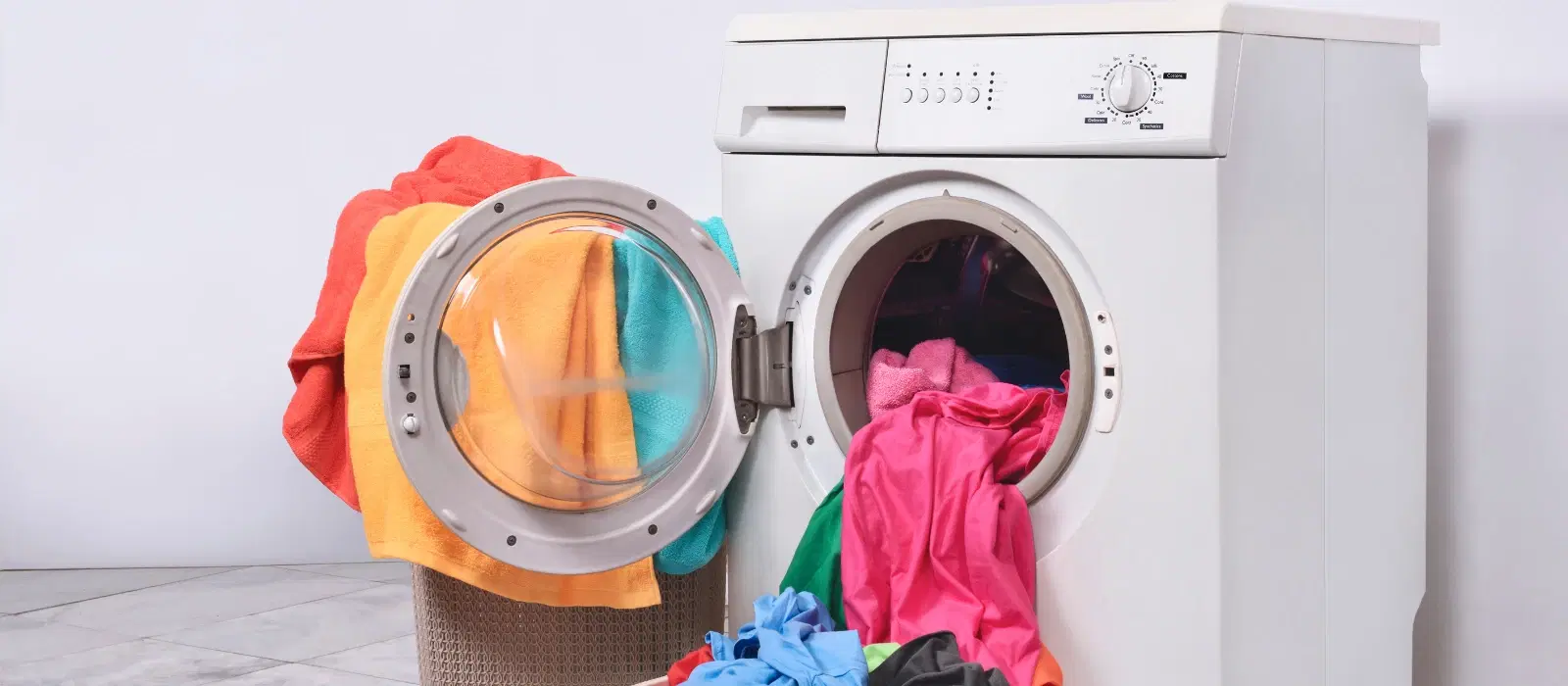
Home Appliances
•04 min read
Ever wondered why your washing machine shakes, rattles, or even moves across the floor during a cycle? It can be both annoying and signalling a problem that needs attention. In this guide, we explain why washing machines vibrate and provide clear, actionable solutions to help you fix and prevent such issues, so you can enjoy a quieter, more effective home appliance. Plus, when you shop with Tata Neu, you can earn NeuCoins rewards on every purchase, making it easier to maintain your home appliances.
The vibration you notice during the spin cycle is largely due to the centrifugal force generated when the drum spins. This is natural, but if the drum becomes unbalanced, it can amplify these forces, leading to more noticeable shaking. It is important to know the difference between a normal level of vibration and excessive shaking that might indicate a deeper mechanical issue. Keep an eye on any unusual noise or movement to catch problems early.
When clothes are unevenly distributed in the drum, the washer can struggle to operate smoothly. Heavy items such as towels or blankets can create an imbalance that results in excessive shaking.
Ensuring that you load the machine according to its capacity is vital. Both overloading and underloading can upset the balance of the machine, which in turn may cause the drum to vibrate excessively during the spin cycle.
The way your washing machine sits on the floor matters a great deal. If it is not correctly levelled, the machine may vibrate more than expected. Using vibration pads or anti-slip mats can mitigate this issue by providing a more stable base.
Over time, key components like drum bearings, suspension springs, or shock absorbers can wear out or become loose. These components are essential for the smooth functioning of the washer, and any deterioration can lead to increased noise and shaking.
If you notice your washing machine shaking, a good first step is to redistribute the laundry load mid-cycle. Placing the machine on a sturdy surface or using vibration pads can help reduce the shaking right away.
For a more lasting fix, adjust and level the washer using its built-in feet. Installing anti-vibration accessories is also an effective way to stabilise the machine. These steps not only ease vibration but also contribute to reducing excessive noise during operation.
If the problem persists, it is wise to inspect for signs of mechanical issues such as loose drum components or failing suspension springs. In cases where DIY fixes do not suffice, contacting a professional technician can prevent further damage and ensure the longevity of your appliance. Always refer to your washer’s manual for specific troubleshooting instructions.
Regularly check your washer's drum and basket for any loose or damaged components. Misalignments can be a common cause of vibrations and addressing them early can help mitigate further problems.
Sometimes, clogs in the filter or pump may cause an imbalance. Make it a habit to clean and maintain these components to ensure that your washing machine runs smoothly.
If your washing machine is new, remember to remove the shipping bolts. These bolts are meant for secure transport and can cause excessive vibration if left in place during regular operation.
Following the manufacturer’s guidelines during installation is crucial. This step ensures the machine is properly set up and can operate without unwanted movement or noise.
Pro Tip: Leveling Your Washing Machine for Optimal Performance
Did you know that even a slight tilt in your washing machine can cause excessive shaking? Use a spirit level to check and adjust the machine's feet until it’s perfectly balanced. This simple step can drastically reduce vibrations and noise.
It is important to discern between the normal hum of a well-operating machine and sound that indicates a problem. Familiarise yourself with what is typical for your washer so that any unusual noise can be investigated promptly.
Vibration dampeners or anti-slip mats can absorb sound effectively. Another option is to relocate the washer to an area that is more amenable to noise, helping to create a more peaceful home environment.
Regular maintenance is key. Cleaning and inspecting the washer’s components not only prevents wear and tear but also ensures the appliance continues to function efficiently. Investing a little time in maintenance can lead to significant savings and less disruption to your daily routine.
Redistribute the laundry load, ensure the machine is level, and use vibration pads or anti-slip mats. For persistent issues, inspect for mechanical faults or call a professional.
Check for unbalanced loads, remove shipping bolts if they are still in place, and inspect for loose internal parts. Use anti-vibration accessories to help stabilise the washer.
Excessive vibration can lead to long-term damage such as worn bearings or a misaligned drum. Address any issues promptly to avoid costly repairs.
A violently shaking washer is typically caused by an unbalanced load, improper leveling of the machine, or worn-out components like suspension springs or drum bearings.
Ensure the washing machine is placed on a stable surface, properly levelled, and avoid both overloading and underloading the drum. Maintaining a regular cleaning and inspection schedule can also help minimise vibration.
Washing machines can vibrate for a number of reasons, from unbalanced loads to worn-out components, and even issues with installation. By understanding these common causes and following the troubleshooting tips provided, you can minimise vibrations, reduce noise, and extend the lifespan of your appliance. Regular maintenance and proper setup are key to keeping your washing machine running smoothly, allowing you to focus on more important things in life. With seamless solutions and practical advice, you can address any issues effectively and enjoy a more peaceful home environment. Don’t forget, shopping with Tata Neu not only helps you find the best appliances but also rewards you with NeuCoins on every purchase, adding value to your everyday life.